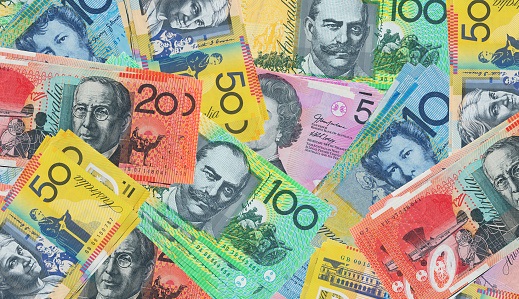US equity markets were choppy during Tuesday’s session. There was much furore over what seemed to be rather hawkish comments from US Treasury Secretary Janet Yellen, who said that interest rates will have to rise somewhat to ensure the economy does not overheat – financial press was all over these remarks (and took them out of context, some argued) and talk of policy normalisation amid inflationary pressures was not taken well on Wall Street, causing stocks to drop. The S&P 500 dropped as low as the 4120s. However, most of the move was quickly reversed and E-mini S&P 500 futures are trading back in the 4180s, given Yellen has no say over Fed policy and after she later clarified that her comments were not a prediction or recommendation for higher interest rates. US equity market attention now returns to the data docket, with the release of the key US April ISM Services PMI today at 1500BST ahead of Friday’s Official April Labour Market Report release.
In Europe equities most regional bourses trade in the green with the overall tone of earnings having been positive and providing a boost to sentiment. The narrative of an improving economic outlook in the region amid falling Covid-19 infection rates and hopes for an easing of travel restrictions in the coming months (that would allow the return of some tourism) also continues to support sentiment. Final Eurozone PMIs for April were out this morning and were broadly as expected, thus failing to provide much impetus to the region. In Asian equities, volumes remain low with China and Japan still on holiday, though, notably, Indian stocks got a boost from an announcement of further RBI liquidity injection and Aussie stocks got a boost from good earnings and strong housing data.
Yesterday’s tumult with regards to Yellen’s interest rate comments does not seem to have much of an impact on US bond markets. 10-year yields currently subdued around 1.60%. The aforementioned data takes centre stage alongside the US Treasury’s quarterly refunding announcement (at 1330BST) today.
Turning to commodities, crude oil prices are firmer; WTI and Brent both trades higher by over 1.0% on the session, the former in the mid-$66.00s and the latter just under $70.00. A much larger than expected draw in US crude oil inventories according to API’s weekly report released on Tuesday night has helped improve the tone in energy markets. The US EIA will be releasing official inventory numbers at 1530BST; “if confirmed by the EIA, that would mark the largest weekly fall in the official data since late January” said Commonwealth Bank. News of further lockdown easing across the US is also being cited as crude oil positive. For now, the positive impact of economic reopening in the US is being argued as outweighing the negative impact to demand of the Covid-19 situation in India. However, the risk of a national Indian lockdown continues to grow as the country continues to post record high infection rates. Elsewhere, geopolitics is also somewhat supportive with reports of attacks on oil wells in Northern Iraq (production at two wells has reportedly been halted). Meanwhile, copper is getting a lot of attention with LME prices back above $10K per tonne, as traders cite the positive global demand outlook as supportive, and gold is subdued around $1780 as it licks its wounds in wake of losses incurred yesterday following Yellen’s “hawkish” comments on interest rates (which saw prices tumble from just shy of $1800 to lows just above $1770).
Turning to FX markets; USD is subdued on the day thus far in tandem with uninspired price action in US government bond markets as traders await key events later in the week. The Dollar Index (DXY) remains well supported to the north of the 91.00 level but appears to have run into some resistance at its 21DMA in the 91.40s. FX traders appeared not to pay rate hikes talk from Yellen as much heed as equity market traders; the buck has been broadly flat since the start of yesterday’s European session. Fed’s Daly was on the wires yesterday and stuck to the Fed’s dovish script. Known hawk Kaplan unsurprisingly reiterated his calls to start discussions about tapering asset purchases sooner rather than later.
NZD is the best performing currency in the G10 this morning in wake of a strong Q1 labour market report, which helped to lift NZDUSD from under 0.7150 to current levels around the 0.7175 mark. Total employment in New Zealand grew at a QoQ pace of 0.6% in Q1 2021 (higher than expectations for a 0.2% rise), bringing unemployment to 4.7% (lower than the 4.9% expected) and giving the participation rate a larger than expected boost to 70.4% from 70.2% in Q4 2020. Meanwhile, the Labour Cost Index showed stronger than expected growth on the quarter of 0.4%.
“Today’s report was a great read, and confirms the strength of the Kiwi economy” said Jarrod Kerr, chief economist at Kiwibank, before continuing that “the economic scarring from Covid lockdowns is far less than anyone had predicted six months ago… The tighter the labour market, the more pressure on wage growth. And wage inflation is not as easily dismissed by the Reserve Bank as inflation generated by temporary supply disruptions”. Wednesday’s labour market report underscores expectations that the RBNZ will be one of the earlier developed market central banks to start normalising rates (i.e. in 2022). On which note, the RBNZ released its semi-annual Financial Stability Report, which noted that though the financial system is currently sound, vulnerabilities remain. If further tightening of policy setting is needed, the report noted, the most straightforward approach would be to further tighten Loan-to-Value Ratio (LVR) restrictions.
Sticking with the antipodes; AUD is the next best performing currency in the G10, as its garners some support from strength in its kiwi counterpart, as well as deriving some traction from strong Australian Building Approvals data for the month of March. Approvals were up 7.4% on the month, well above the expected rise of 3.0%. According to analysts at Reuters, building booms tend to have “major spill overs” to jobs and spending and should instil even confidence in the outlook for the Australian economy at the RBA (which upgraded its economic growth forecasts on Tuesday). AUDUSD currently remains well supported to the north of the 0.7700 level.
In terms of the rest of the G10; CAD and NOK are both being supported by higher crude oil prices. USDCAD is down about 0.2% on the day and back under 1.2300 despite negative Covid-19 lockdown news in Canada (Alberta to toughen restrictions and continued concerns over the AstraZeneca jab after a woman in her 50s died following inoculation). GBP, EUR, JPY, SEK and CHF all trade close to flat, the former subdued ahead of risk events later this week (Scottish election and an important BoE rate decision), the euro shrugging off broadly as forecast final April PMIs and March PPI data, JPY subdued as it awaits further direction from US/Japan rate differentials (which are broadly flat on the day) and SEK unenthused despite improvements in Services PMI (for April) and Industrial Production (for March).
The Day Ahead
A busy day ahead for US market participants; the April ADP National Employment number (which helps set expectations for the official labour market report on Friday) is out at 1315BST, the US Treasury’s Quarterly Refunding Announcement is at 1330BST (followed by a press conference at 1500BST), Fed member Evans’s is speaking at 1430BST, the April ISM Services PMI survey is out at 1500BST, Fed member Rosengren speaks at 1600BST and Fed member Mester is speaking at 1700BST. Elsewhere, energy traders will be watching the official weekly EIA crude oil inventory report at 1530BST. Euro traders will be keeping an eye on comments from the ECB’s chief economist Philip Lane at 1500BST.




